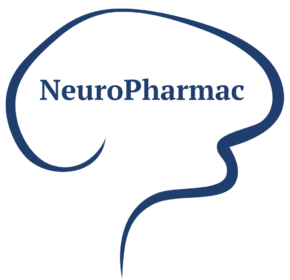Department of Pharmacology, College of Medicine, Shaqra University, Saudi Arabia.
ABSTRACT Reported studies from many works of literature state that coronavirus disease 2019 (COVID-19) affects the central nervous system and peripheral nervous system leads to many neurological indications including headache, dizziness, impaired consciousness, acute cerebrovascular disease, epilepsy, hyposmia/anosmia, hypogeusia/ageusia, muscle pain, altered mental status, and GuillainBarre syndrome. This review article summarized the reported neurological complications in coronavirus disease 2019 patients worldwide. Healthcare workers should aware of a wide range of neurological symptoms for the early diagnosis and management of the cases.
KeywordsCOVID-19, Neurological complications
The pandemic of coronavirus disease 2019 (COVID19)due to severe acute respiratory syndrome coronavirus 2(SARS-CoV-2)has already affected more than 2.7 million people and caused more than 3,021,397 deaths worldwide.[1]
According to the reported studies,more than 35% of COVID-19 atients develop neurological symptoms. Some COVID-19 patients may present neurologic symptoms as the initial presentations of the disease.[2]
One study conducted on 214 hospitalized patients in Wuhan, China concludes that compared with non-severe patients with COVID-19, severe patients commonly had neurologic symptoms manifested as acute cerebrovascular diseases (5.7%), consciousness impairment (14.8%), skeletal muscle symptoms (19.3%), anosmia in 11 (5.1%) patients and ageusia in 12 (5.6%) patients.[3] ,[4]
Viral meningoencephalitis with the presence of SARS-CoV-2 in cerebrospinal fluid by viral genome sequencing has been reported in patients in China[5] and Japan.[6]
In one reported study in the USA, a woman aged between 50 and 60 years developed COVID-19 and altered mental status. Brain magnetic resonance imaging (MRI) on this patient showed bilateral hemorrhagic rim-enhancing lesions within thalami, medial temporal lobes, and subinsular regions characteristic of acute hemorrhagic necrotizing encephalopathy.[7]
Findings from the Spanish Society of Neurology indicate that a total of 233 cases were submitted, including 74 different combinations of manifestations. The most frequently reported were stroke (27%), neuromuscular symptoms (23.6%), altered mental status (23.6%), anosmia (17.6%), headache (12.9%), and seizures (11.6%). The mean age of patients was 61.1 years, with 42.1% being women; a higher proportion of women was recorded among patients with altered mental status, anosmia, and headache.[8]
One reported study from the USA indicates the cervical spinal cord infarction associated with coronavirus infectious disease (COVID-19) in the 31-year-old male patient.[9]
The global response to the pandemic indicates that healthcare authorities, neurologists and government authorities, and scientists should create databases of neurological complications related to COVID-19.
These databases will also contain peer-reviewed publications of the reported neurological complications of the pandemic. This effort should help develop an understanding of the neurological impact of COVID-19. the Spanish Neurological Society implemented a registry of neurological manifestations in patients with confirmed COVID-19. We appreciate this initiative and hope to expand these efforts globally to define the neurological involvement in COVID19, which will help healthcare workers for the early diagnosis and management of the cases.
References
- 1.Pathan A. Current off-label Pharmacotherapeutics in the management of novel coronavirus disease (COVID-19). NeuroPharmac J. 2020; 5(1): 108-112. DOI: 10.37881/1.511. [Google Scholar] [PubMed]
- 2.Jiang Fang, Deng Liehua, Zhang Liangqing, Cai Yin, Cheung Chi Wai, Xia Zhengyuan. Review of the Clinical Characteristics of Coronavirus Disease 2019 (COVID-19) Journal of General Internal Medicine. 2020;35(5):1545–1549. doi: 10.1007/s11606-020-05762-w. [Google Scholar] [PubMed]
- 3.Mao L, Jin H, Wang M, Hu Y, Chen S, He Q, Chang J, Hong C, Zhou Y, Wang D, Miao X, Li Y, Hu B. Neurologic Manifestations of Hospitalized Patients With Coronavirus Disease 2019 in Wuhan, China. JAMA Neurol. 2020 Jun 1;77(6):683-690. doi: 10.1001/jamaneurol.2020.1127. [Google Scholar] [PubMed]
- 4.Vaira LA, Salzano G, Deiana G, De Riu G. Anosmia and Ageusia: Common Findings in COVID-19 Patients. Laryngoscope. 2020 Jul;130(7):1787. doi: 10.1002/lary.28692. Epub 2020 Apr 15. [Google Scholar] [PubMed]
- 5.Wu Y, Xu X, Chen Z, Duan J, Hashimoto K, Yang L, Liu C, Yang C. Nervous system involvement after infection with COVID-19 and other coronaviruses. Brain Behav Immun. 2020 Jul;87:18-22. doi: 10.1016/j.bbi.2020.03.031. [Google Scholar] [PubMed]
- 6.Moriguchi T, Harii N, Goto J, Harada D, Sugawara H, Takamino J, Ueno M, Sakata H, Kondo K, Myose N, Nakao A, Takeda M, Haro H, Inoue O, Suzuki-Inoue K, Kubokawa K, Ogihara S, Sasaki T, Kinouchi H, Kojin H, Ito M, Onishi H, Shimizu T, Sasaki Y, Enomoto N, Ishihara H, Furuya S, Yamamoto T, Shimada S. A first case of meningitis/encephalitis associated with SARSCoronavirus-2. Int J Infect Dis. 2020 May;94:55- 58. doi: 10.1016/j.ijid.2020.03.062. [Google Scholar] [PubMed]
- 7.Poyiadji N, Shahin G, Noujaim D, Stone M, Patel S, Griffith B. COVID-19-associated Acute Hemorrhagic Necrotizing Encephalopathy: Imaging Features. Radiology. 2020 Aug;296(2): E119-E120. doi: 10.1148/radiol.2020201187. [Google Scholar] [PubMed]
- 8.García-Azorín D, Abildúa MJA, Aguirre MEE, Fernández SF, Moncó JCG, Guijarro-Castro C, Platas MG, Delgado FR, Andrés JML, Ezpeleta D; Spanish neuroCOVID registry group. Neurological presentations of COVID-19: Findings from the Spanish Society of Neurology neuroCOVID-19 registry. J Neurol Sci. 2021 Apr 15;423:117283. doi: 10.1016/j.jns.2020.117283. [Google Scholar] [PubMed]
- 9.Kahan J, Gibson CJ, Strauss SB, Bronstein M, Winchell RJ, Barie PS, Segal AZ. Cervical spinal cord infarction associated with coronavirus infectious disease (COVID)-19. J Clin Neurosci. 2021 May;87:89-91. doi: 10.1016/j.jocn.2021.02.027. [Google Scholar] [PubMed]

